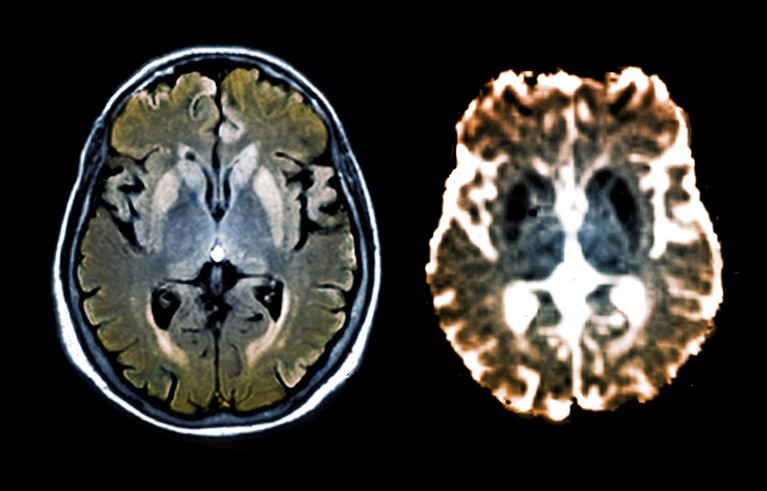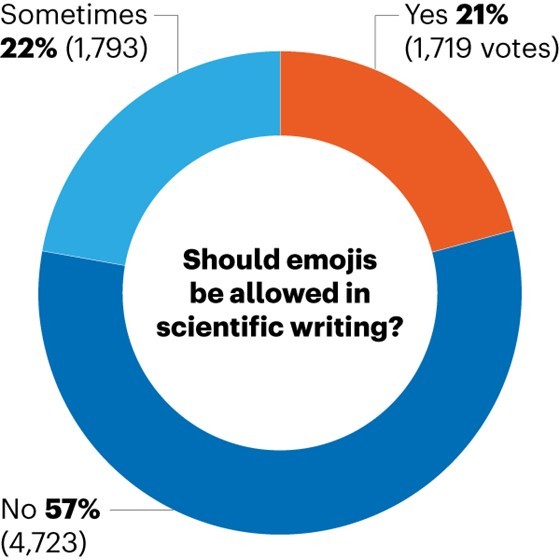Hello Nature readers, would you like to get this Briefing in your inbox free every day? Sign up here.

Creutzfeldt–Jakob disease is a rare brain disorder caused by misfolded proteins, which can be suppressed by a new editing system.Credit: Zephyr/Science Photo Library
A molecular-editing tool that’s small enough to be delivered to the brain shows promise for warding off prion diseases, a rare but deadly group of neurodegenerative disorders. The system — known as coupled histone tail for autoinhibition release of methyltransferase (CHARM) — changes the ‘epigenome’, a collection of chemical tags that are attached to DNA and that affect gene activity. In mice, CHARM silenced the gene that produces the disease-causing proteins in most neurons across the brain without altering the gene sequence. This system is the first step towards developing a safe and effective ‘one and done’ treatment for reducing the levels of harmful proteins that cause prion disease, says bioengineer Madelynn Whittaker.
Scientists have identified a brain area that is involved in the ‘full feeling’ experienced by people taking Ozempic and similar weight-loss drugs, even when they haven’t taken a single bite. The brain region holds two groups of neurons: one for pre-meal sensations of fullness and one for post-meal satiety. “Based on what they’ve found, it appears that this specific region of the hypothalamus is responsible for both, which is pretty cool,” says neurodevelopment researcher Allison Shapiro.
A ketamine-containing tablet for depression could be a convenient alternative to intravenous ketamine treatments, with fewer unpleasant side effects. Researchers found that a tablet containing ketamine had antidepressant effects in more than 150 people who had not responded to other drugs. “The fact that potentially you could dose this at home if you wanted to, it suddenly makes this a much easier medication to give out,” says psychiatrist and co-author Paul Glue.
Reference: Nature Medicine paper
Reader poll

Last week, food-systems scholar Madhura Rao started a lively discussion on social media when she said students should feel free to use emojis in their thesis’s summary for the general public.
The majority of readers who replied to our poll said emojis shouldn’t be allowed in scientific writing. Many felt that using symbols with unclear meaning takes away from the precision expected in research. “Including emojis in a thesis summary for the general public is like writing half of it in Klingon,” says pathologist Jacqueline Bentel. “Understood and appreciated by a vocal (and important!) subset of people, but misunderstood and alienating for the majority.”
Others suggested that, in some cases, emojis can help to convey feelings or ideas sometime more easily than words. “A text becomes unreadable 📚 if it looks 👀 like 👍 this, but I count on the intelligent student to decide which words, phrases or emojis they use when displaying their own work to the public,” says molecular biologist Yarin Livneh.
Features & opinion
A technique that harnesses ‘jumping genes’ — mobile genetic sequences naturally found in bacteria that can cut, copy and paste themselves into genomes — could hold the key to redesigning DNA at will. Guided by an RNA molecule called a ‘bridge’ RNA or ‘seekRNA’, the system has been shown to edit genes in a bacterium and in test-tube reactions, but it is still unclear whether it can be adapted to work in human cells. If it can, it could be revolutionary, owing to its small size and its ability to make genetic changes that are thousands of bases long — much larger than is practical with the CRISPR — without breaking DNA.
Reference: Nature paper 1, Nature paper 2 & Nature Communications paper
A kindergarten teacher who, when given alien ambassador lemons, makes political activism lemonade in the latest short story for Nature’s Futures series.
Andrew Robinson’s pick of the top five science books to read this week includes an engaging global history of psychology, a cognitive-neuroscience view of music and a practical, inspiring book about how artificial intelligence can transform education.

